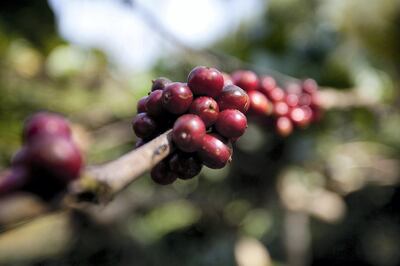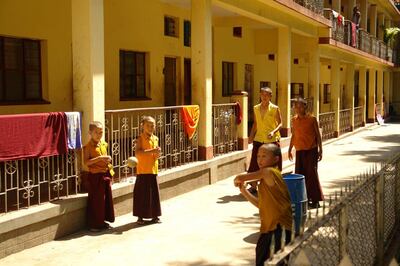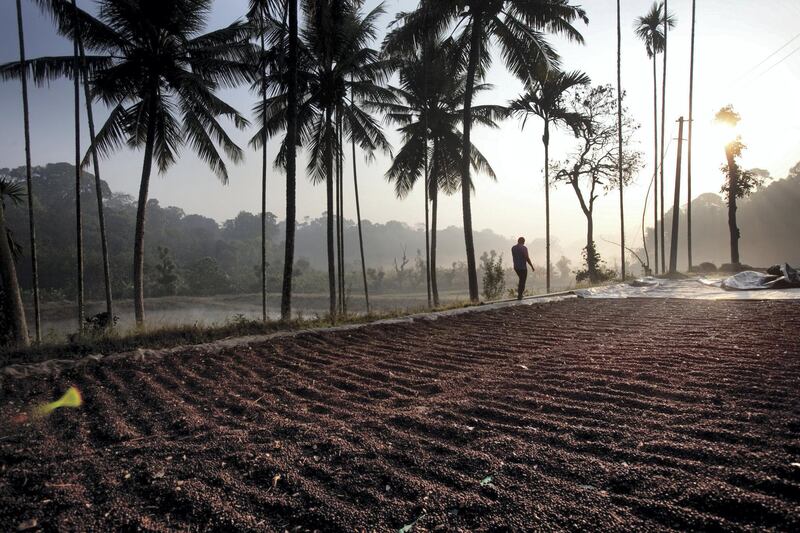It is still early in the evening, with a few hours to go before sunset, but all I can see outside is the swirling mist. When I had checked into at my resort a few hours earlier, the view from the balcony of my room was a lush carpet of green. Now, it’s white blanket. But I am not surprised. After all, this is Coorg, in south India, and I’m visiting during monsoon months, when the fog sweeps over as soon as there’s a break in the rain.
The scenery on my way from Bangalore changed dramatically once I entered the area; crowded highways turning into narrow lanes and commercial activity making way first for emerald paddy fields and then undulating hills dotted with seasonal waterfalls and sprawling plantations. It is obvious that Coorg is a blessed land; a variety of spices growing with abandon across this tiny region – pepper, cardamom, nutmeg, clove and even honey. The undisputed star of Coorg, though, is coffee.
Known in the local language as Kodagu, Coorg is part of the region in south India where coffee first arrived in the country. Legend has it that Sufi saint Baba Budan was delighted when he discovered coffee during a pilgrimage to Makkah, sometime in the 17th century. And on his way back, via the port of Yemen, he hid a few beans in the folds of his robes. As celebrated novelist R K Narayan wrote in his book A Storyteller's World, "The origin of Indian coffee, thus, is saintly. It was not an empire builder or a buccaneer who brought coffee to India but a saint, one who knew what was good for humanity."
“Indeed, he did,” I think, as I sip on the frothy brew at the coffee shop of The Tamara resort the next morning. Located within a functioning organic coffee plantation, the property is proof of how easily coffee travelled from Baba Budan’s base in the town of Chikmagalur to nearby Coorg, and how well it flourished in the wet, hilly landscapes there. The Coffee Board of India estimates that more than 70 per cent of the country’s beans are grown in Karnataka, almost entirely in Chikmagalur and Coorg, and are used for both domestic consumption and exports to Europe.

The cup is my reward at the end of a two-hour walk through the coffee estate with Sareesh Kumar, the resident naturalist who seems to know the names and qualities of practically every plant on the trail. The rain has let up for the morning, and I am exhilarated by the hike through a thick canopy of silveroak and rosewood trees with pepper vines snaking around their tall trunks. Sunlight barely filters into the Arabica and Robusta shrubs all along the path, and the air is crisp and refreshing.
Kumar extols the moody nature of the coffee plant that demands great care and attention along with shade, and describes the taste differences between a brew made from Arabica and Robusta beans. I listen to him with half an ear as I lean towards the plump fruit in the vain hope of smelling coffee. He smiles at my enthusiasm, saying the berry has a long way to go before it reveals its true colours, or in this case, aromas and flavours.
______________________
Read more:
The cultural safari: luxury tented camping in central India
Luxury India: Rajasthan refreshed
Passage to India: a visit to Murshidabad, West Bengal
______________________
And then it’s quiz time: “What does the coffee flower smell like?” he asks me. I know enough by now not to say “coffee” but I take a lame stab at the response anyway. It turns out, it’s jasmine. That’s what the sneaky coffee flower smells and even looks like.
It is an easy walk, with caterpillars and leeches, parakeets and hornbills, waterfalls and streams for company all the way. Before we know it, we fetch up in front of the small cafe that doubles as souvenir shop. It’s time for the “Blossom to brew” lesson. I learn to select, roast and powder my own coffee beans. Ah, finally, that aroma I have been dreaming of. And then I get to make my own drink. The south Indian in me can allow nothing other than local filter kaapi (a strong drip decoction lightened with hot milk and sugar) and I sit back to enjoy what I consider my personal blend.
On my way back home, I take a detour for a slice of Tibet. Bylakuppe is the second-largest hub – after Dharamshala – for Tibetan monks in India who followed in the footsteps of their spiritual leader, the Dalai Lama, some 60 years ago.
The cluster of monasteries, stupas and residential areas (divided into old and new Camp) was built in the early 1970s on land given as a gift to the community by the king of Mysore. The most famous of these temples is the Namdroling Monastery with its golden roof (it’s also known as the Golden Temple), that beckons to visitors from a great distance. Turning off the main road, we drive through dusty lanes where the only colour is that of prayer flags fluttering in the morning breeze and the maroon and yellow robes of monks walking in small groups or riding their motorbikes with great style.

While the tourist crowds throng the premises of the temple, taking photographs from all angles, bargaining raucously with local vendors and arguing over where to find the best thukpa and momos in the neighbourhood, it is a completely silent tableau inside. There are three gigantic gilded statues of Buddha, in his states as Shakyamuni, Padmasambhava and Amitayus. On one side of the room, I spot a row of monks poring over their scripture books and chanting in low tones. On my walk around the monastery, I come across another group of monks – young, barely in their teens – engaged in a boisterous game of cricket. I realise then that this Tibetan community here is much like coffee itself: both are settlers from another country who have made Coorg home.
Of course, there is more to Coorg than coffee. History residing in the old temples and ruined forts near the town of Madikeri and adventure that ranges from easy treks to canoe rides all over the region. Then there are the popular picnic spots like the perennial Abbey Falls, the Dubare Elephant Camp and the Talacauvery shrine, from where the River Cauvery (held sacred by locals) originates.
But I ignore all these attractions to stay put in my room, watching the clouds play hide and seek with the green hills.





